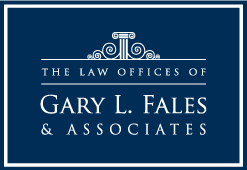As a medical malpractice lawyer, one of the most common scenarios that I am asked about involves infection after a surgical procedure. There are a number of considerations that must be undertaken in order to determine whether a patient has a legitimate claim for medical malpractice or hospital negligence arising out of a postoperative infection.
First, it is important to understand that medical malpractice, also called medical negligence, requires proof of 3 different elements. The first element is negligence. Proof of negligence requires evidence that a physician, nurse or other hospital employee did something wrong or inappropriate to cause an infection. The second element is called “proximate cause.” Proximate cause means that the act of negligence led to some type of harm.
Finally, damages must be proven. In the context of medical negligence, damages include loss of wages, medical bills incurred and pain-and-suffering. However, most medical malpractice lawyers will tell you that damages have to be sufficient in order in order to warrant the time, expense and risk associated with medical malpractice litigation. In these cases, the defendants win at trial far more often than they lose. For this reason, they are willing to aggressively defend these claims. This leads to expensive litigation. A medical malpractice lawyer may advance $25,000 to $200,000 in case expenses in order to pursue a medical malpractice action from inception through trial. In addition, the lawyer will spend his or her valuable time, which may have a market equivalent of $30,000 to $75,000. Therefore, in order to pursue a medical malpractice case, the damages must clearly exceed several hundred thousand dollars in order to make the claim economically viable.
To prove that a health care provider negligently caused an infection, you would have to show that the doctor, nurse or other health care worker violated the hospital’s infection control measures or other sterile techniques. This is generally impossible. For example, how would you ever know that someone failed to wash their hands? The mere occurrence of an infection is covered by the informed consent process. At the outset of a surgical procedure, you will be asked to sign an informed consent form which states that you have been informed of all risks of the procedure. Clearly, infection is a risk of every surgical procedure. So, the mere fact that an infection occurred does not prove negligence.
In some very unique circumstances, you can prove that sterile techniques were not followed. For example, we pursued a medical malpractice claim arising out of a situation where a neurosurgeon dropped a portion of the skull that was being reimplanted into the patient’s head. The physician attempted to re-sterilize the bone flap, but the patient nonetheless developed a significant E. coli infection in her brain, leading to brain herniation, stroke and severe brain damage. We were able to show that the sterility techniques implemented by the neurosurgeon were inadequate, since OR personnel “broke scrub” to take the skull flap to another room to be sterilized. In other cases, a violation of infection control measures can be established when there is an outbreak. We have seen cases where colonoscopy scopes were not properly sterilized after use leading to infections. Similarly, arthroscopes used in arthroscopic knee surgeries were not cleaned in one instance leading to an outbreak of serious knee infections. But these cases are rare.
In some cases, prophylactic measures are required to prevent infection before it occurs. In a number of “dirty” surgeries, where the likelihood of postoperative infection is high, such as gynecological surgeries, the standard of care requires the surgeon to order the administration of prophylactic antibiotics prior to the operation. There are a number of published standards of care requiring the use of prophylactic antibiotics for a variety of different operations. As the lawyers at Mishkind Law can explain, Not only do the standards require prophylaxis, but they also dictate the timing of antibiotic administration. If the antibiotic is given too far in advance, it will not be effective in preventing infection. Failure to follow these guidelines constitutes medical negligence.




